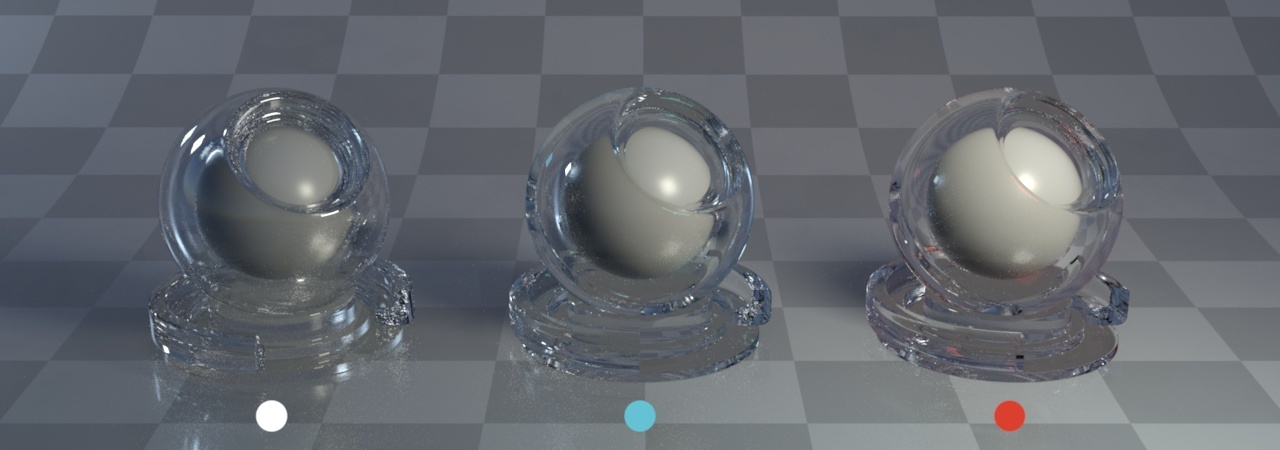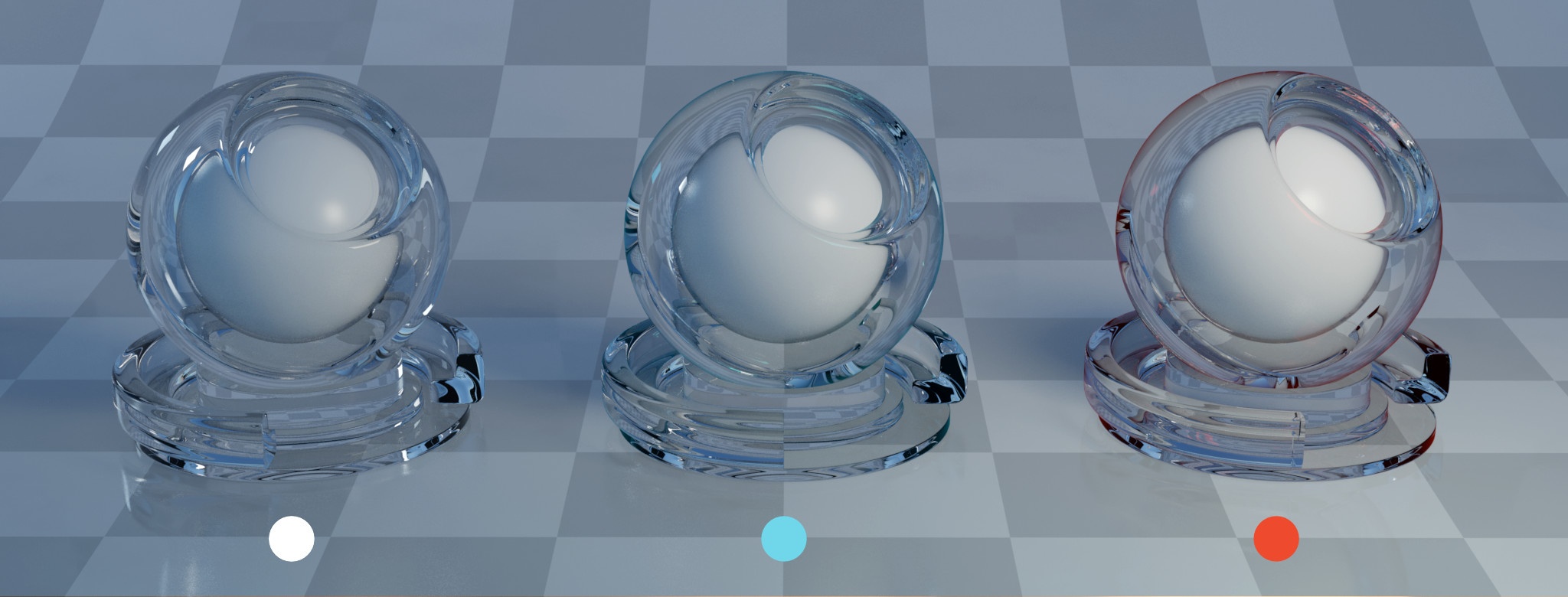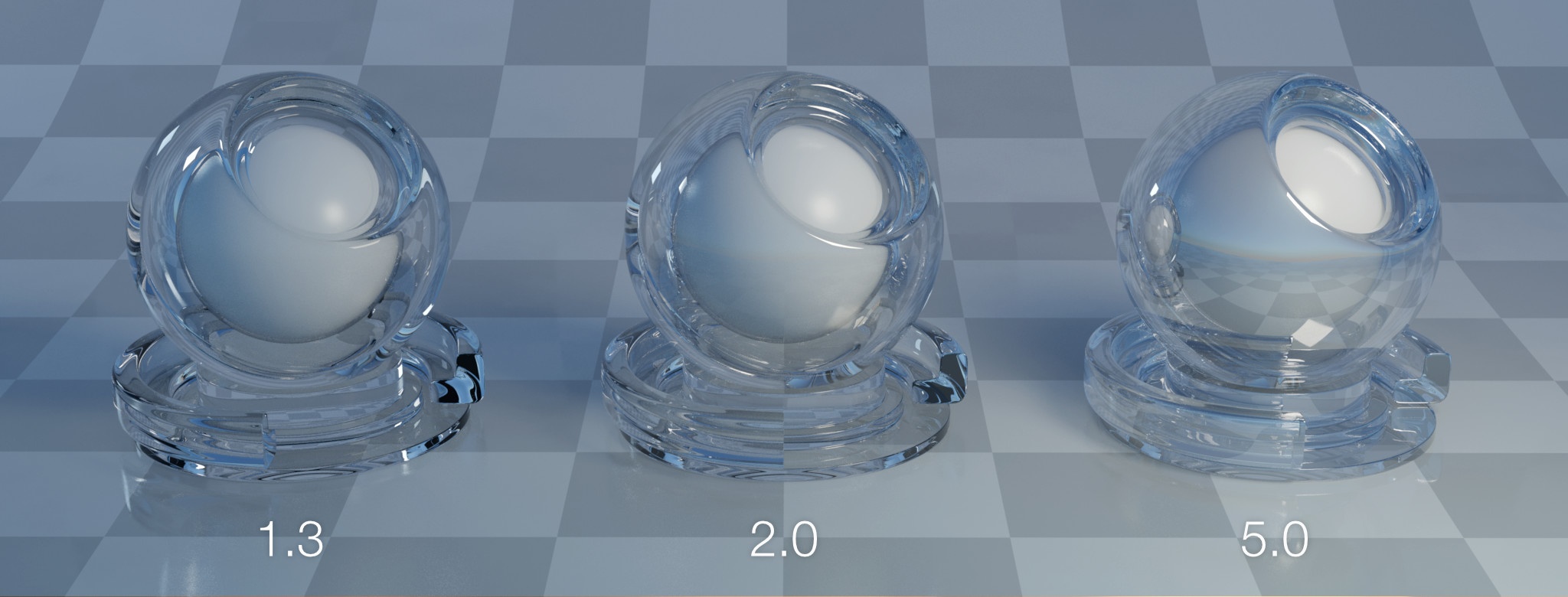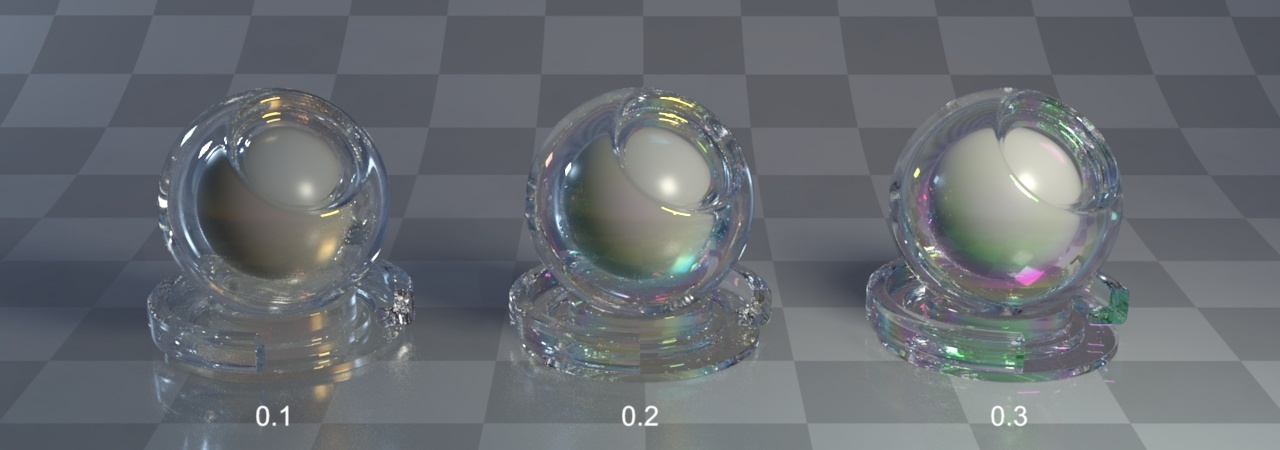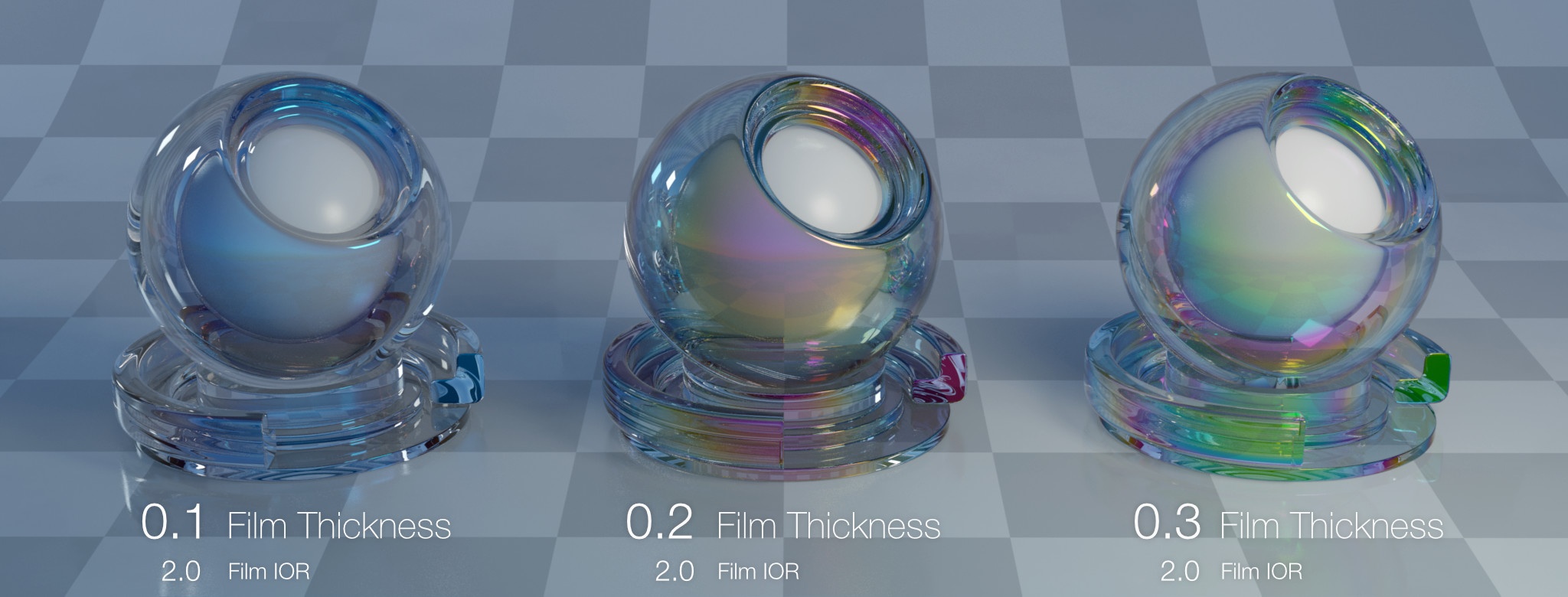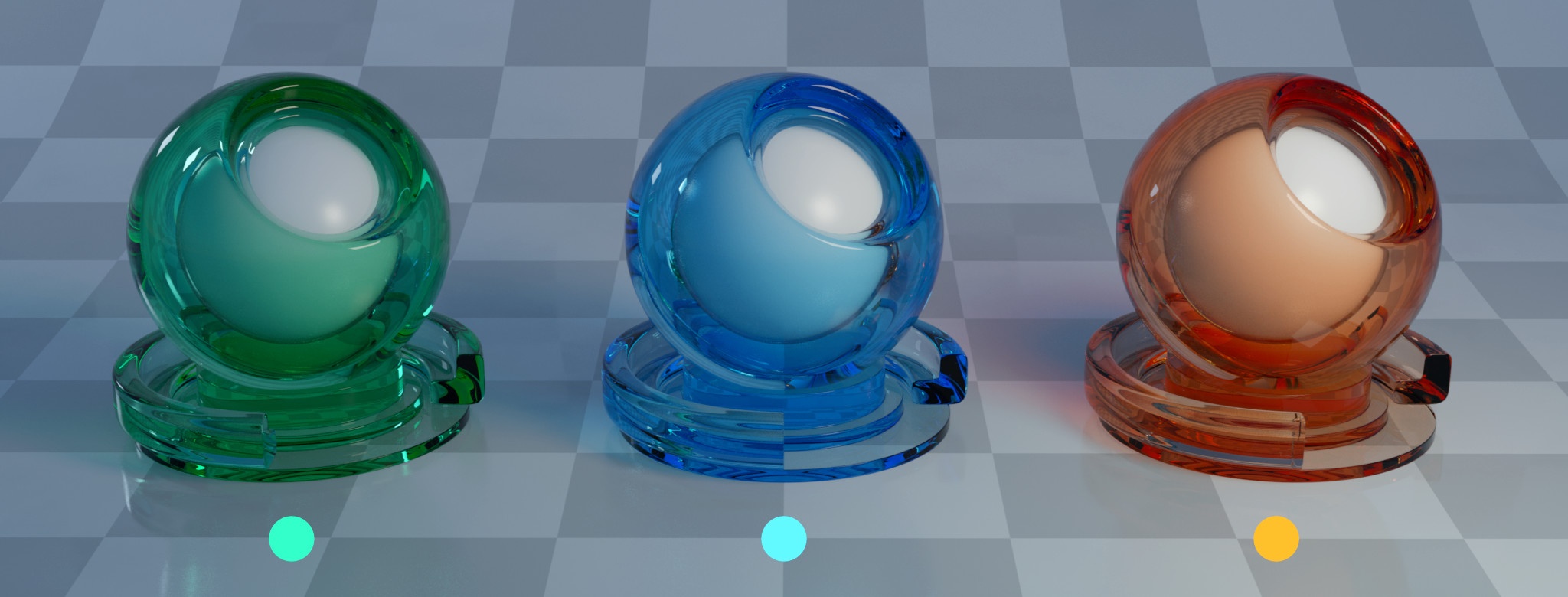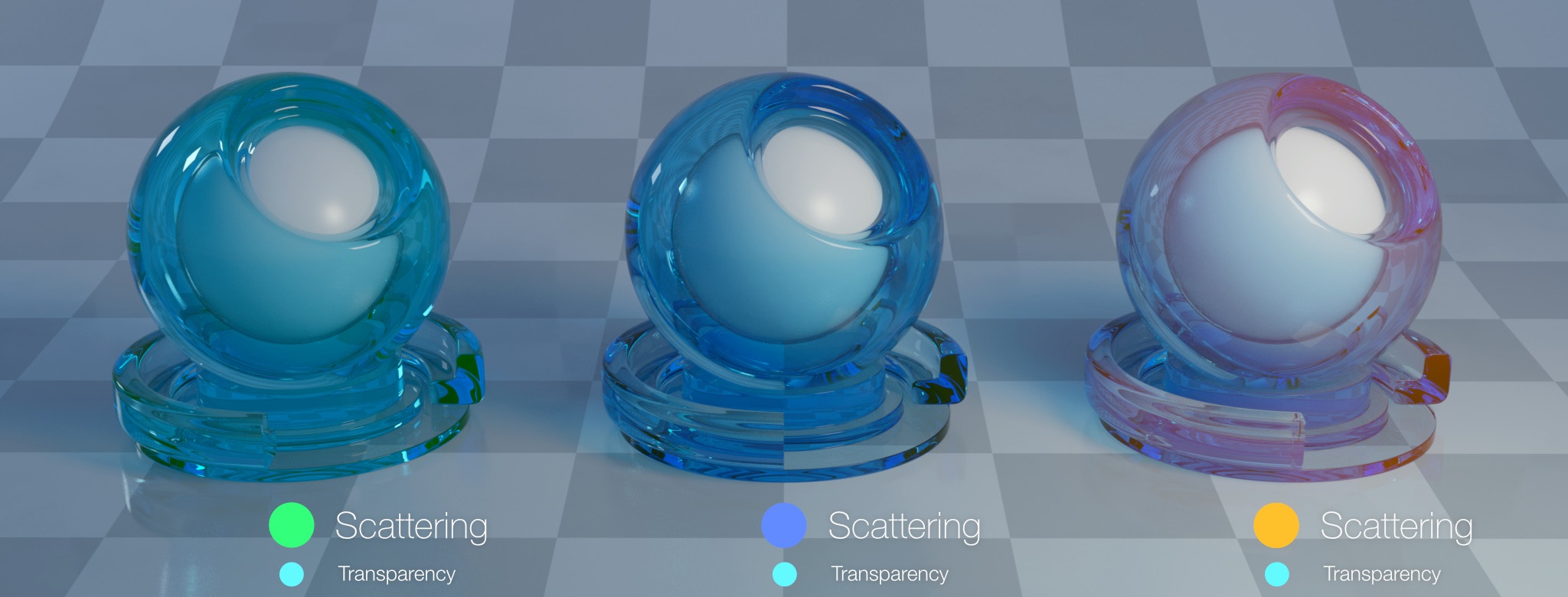...
Specifies the color for reflections.
| Info | ||
|---|---|---|
| ||
Glass can't have coloured reflection or refraction. It reflects and refracts light unaltered. Plastics on the other hand produce coloured reflections and refractions and this colour should be set to the colour of the plastic. |
...
This controls the specular roughness (for the GGX BRDF). The larger the value, the rougher is the surface. A roughness of zero generates mirror reflections.
IOR
The index of refraction to use to calculate Fresnel reflections. Higher values generate more prominent specular reflections. Note that there is a separate controls for refractions.
Thin Film
Enables thin-film interference. Thin film interference is a complex phenomena that depends on many variables, including viewing position and usually generates rich patterns on top of the rendered surface. 3Delight performs a physically correct light interference simulation of this phenomena.
Refraction |
|---|
Color
...
Specifies how dense the material is.
Transparency
Scattering
Incandescence |
|---|
Color
The colour the incandescence.
...
